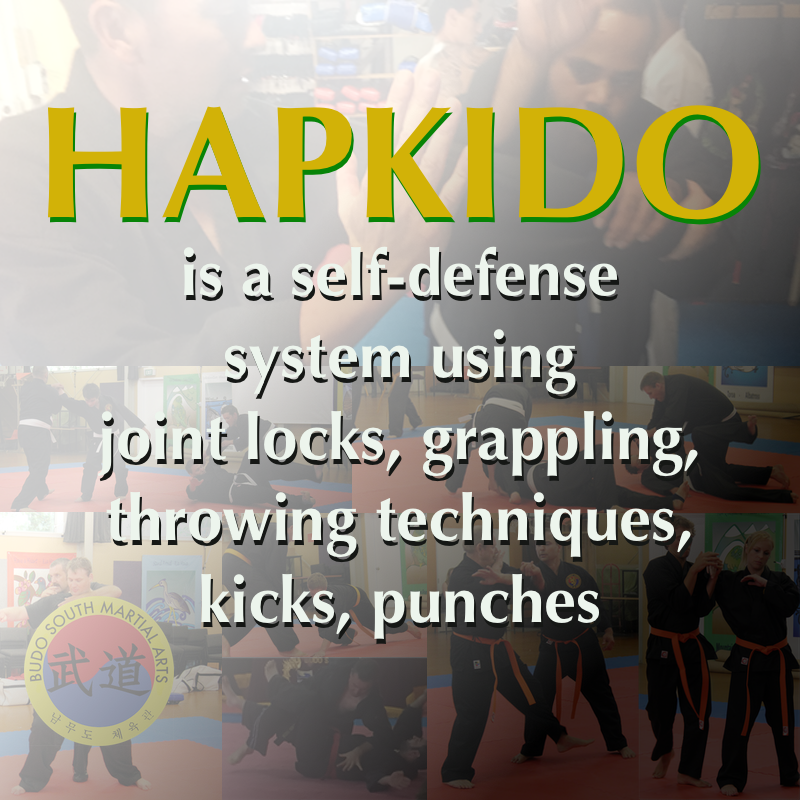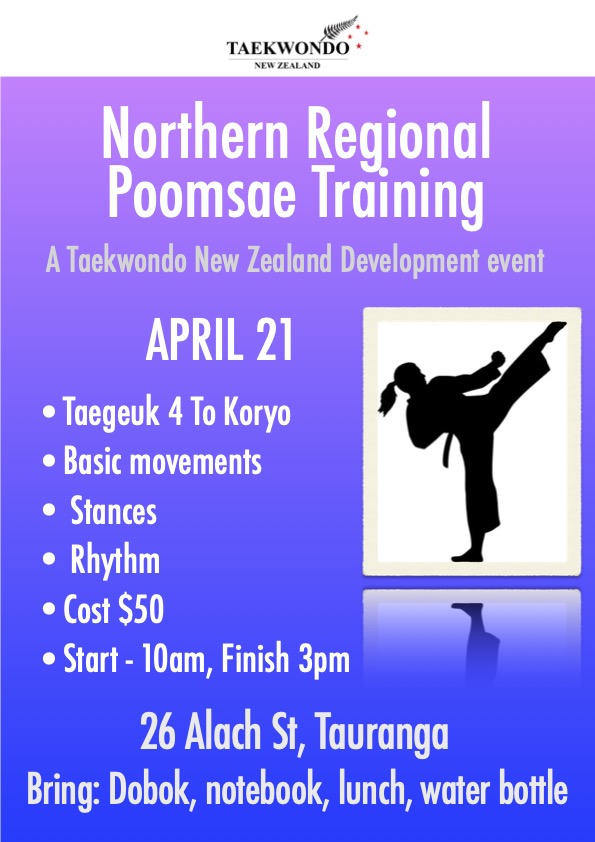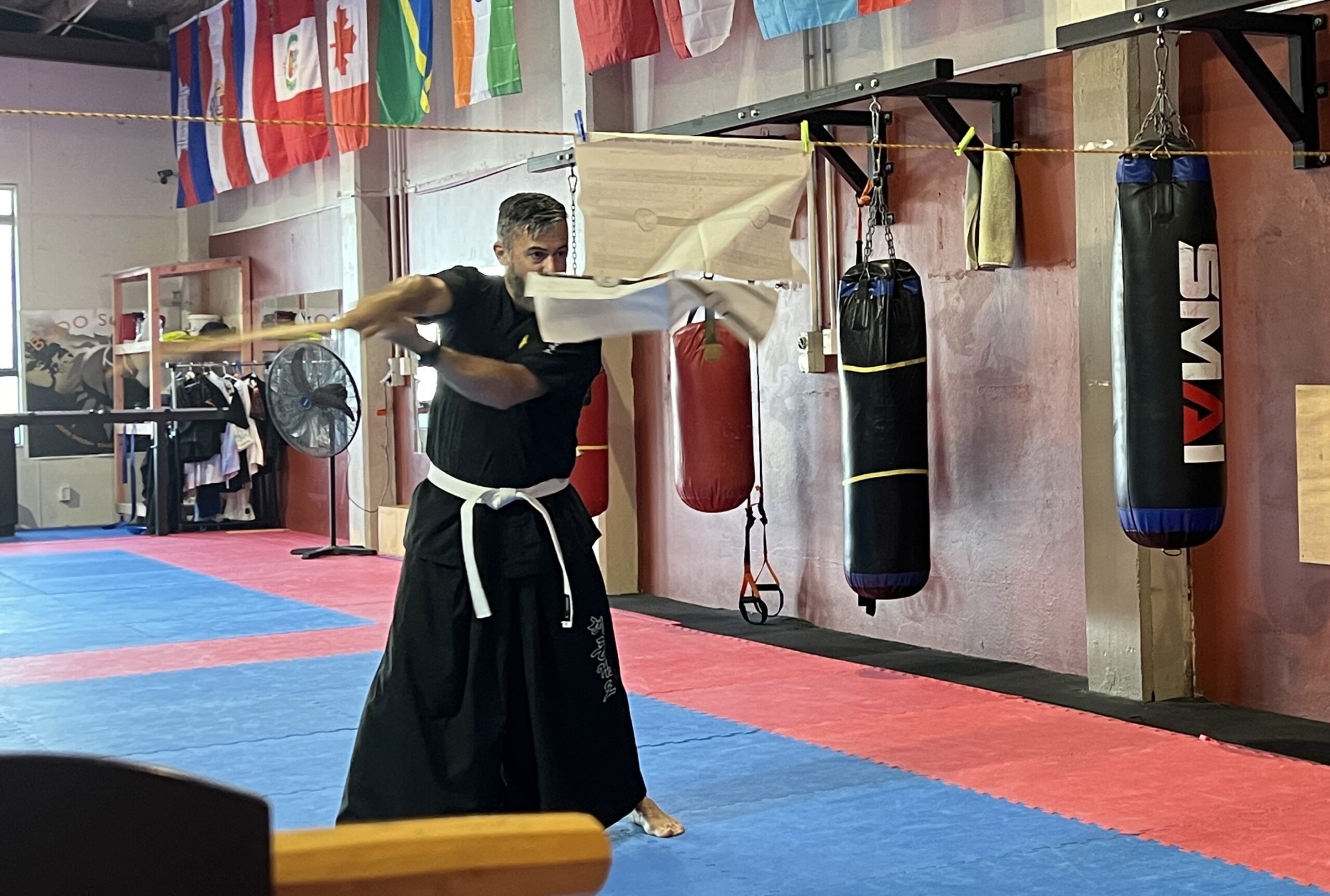Hapkido is a Korean martial art. It is a form of self-defense that employs joint locks, grappling, throwing techniques, kicks, punches, and other striking attacks. It also teaches the use of traditional weapons, including knife, sword, rope, nunchaku, cane, short stick, and middle-length staff, gun, and bō, which vary in emphasis depending on the particular tradition examined.
Hapkido employs both long-range and close-range fighting techniques, utilizing jumping kicks and percussive hand strikes at longer ranges, and pressure point strikes, joint locks, and throws at closer fighting distances. Hapkido emphasizes circular motion, redirection of force, and control of the opponent. Practitioners seek to gain advantage over their opponents through footwork and body positioning to incorporate the use of leverage, avoiding the use of brute strength against brute strength.
The art was adapted from the Japanese martial art of Aikido as it was taught by Choi Yong-Sool (최용술) when he returned to Korea after World War II after having lived in Japan for 30 years. This system was later combined by Choi’s disciples with kicking and striking techniques of indigenous and contemporary arts such as Taekkyon, and Tang Soo Do; as well as various throwing techniques and ground fighting from Japanese Judo.
Although Aikido and Korean Hapkido share common technical origins, in time they have become separate and distinct from one another. They differ significantly in philosophy, range of responses, and manner of executing techniques. The fact that they share the same technical ancestry represented by their respective founders practice of Daitō-ryū Aiki-jūjutsu, and that they share the same Chinese characters, despite 合 being pronounced “ai” in Japanese and “hap” in Korean, has proved problematic in promoting hapkido internationally as a discipline with its own set of unique characteristics differing from those common to Japanese martial arts.
Hapkido is a Korean martial art of self defence descending from Daito-Ryu Aiki JuJutsu. Hapkido teaches you to defend yourself and others against a variety of attacks. It combines hand strikes and powerful kicking with joint locks, pressure points, holds, takedowns and throws.
Hapkido includes the use of everyday items, such as coins, pens, magazines, and bags as defensive weapons. It also offers very good all round physical training – improving your aerobic capability, strength, stamina and flexibility.
The emphasis is not on hurting other people, but on being able to protect yourself and others around you with reasonable force. Hapkido’s techniques are based on an opponents attack, meeting that attack, turning it back on the attacker, and following through with offensive finishing techniques if required.
Hapkido in New Zealand
Hapkido was introduced to New Zealand by Grand Master Lee Jung Nam who holds 9th degree black belts in both Hapkido and Tae Kwon Do. Grand Master Lee and his family moved to New Zealand in 1974 after he made friendships with New Zealanders while serving in Vietnam as a Captain in the Korean Army where, as part of his duties, he taught unarmed combat.
On this arrival in New Zealand Grand Master Lee began to promote Taekwondo to the general public and taught Hapkido to the New Zealand Police, the Ministry of Transport and to Prison Officers.
Many of Master Lee’s original students have set up clubs around NZ, including Callum Forbes, who now runs the New Zealand Hapkido Federation headquarters in Upper Hutt.
Master Lee retired from Hapikdo in 2006 and since then Callum Forbes has been the head of New Zealand Hapkido.
New Zealand Hapkido
The New Zealand Hapkido are the governing body of traditional hapkido in New Zealand, based from our Headquarters club in Upper Hutt.
World Kido Federation / Hanminjok Hapkido Association.
In recent years we have added (where appropriate) additional Hapkido material taught to us by Grand Master In Sun Seo who heads the World Kido Federation/Hanminjok Hapkido Association




